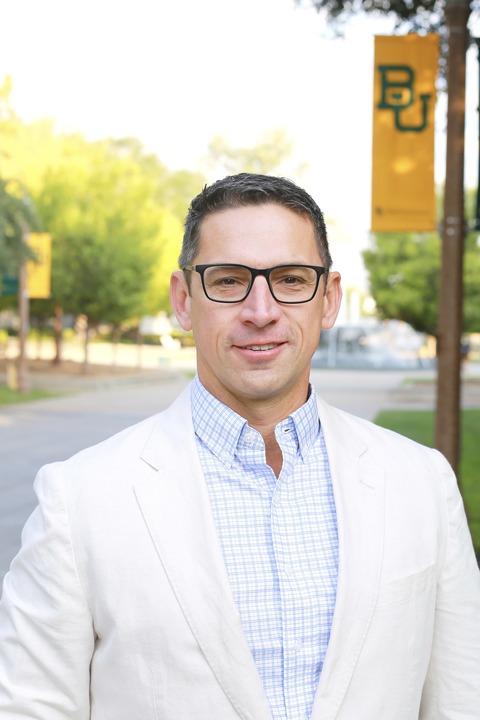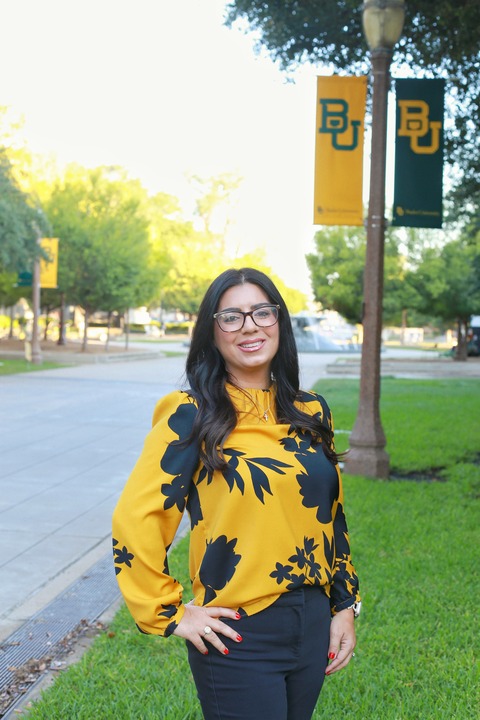From Vision to Reality: The Graduate School's Expansive Leap
Over the last five years, Baylor's Graduate School has seen significant growth, attainment of R1 status, and a sustained investment in research expenditures—and the momentum is only beginning.
Imagine the experience of the average fifth-year PhD student at Baylor today. She arrived on campus in the fall of 2019, one of 147 incoming PhD students. Her incoming cohort made up 21% of total PhD enrollment. Overall, she was one of 3,925 graduate students who made up less than 22% of Baylor’s overall enrollment. The average stipend was $21,000 per year and Baylor’s student fees were some of the highest in the nation.
Today, the newest PhD cohort is made up of 176 students—20% larger than in 2019. This new cohort makes up just 19% of total PhD enrollment. Overall, there are now 5,669 graduate students who constitute more than 27% of Baylor's overall enrollment. The average stipend is $27,000 and will increase to $29,000 and $31,000 over the next two years. Student fees are nonexistent—that's right, zero.
And perhaps the most celebrated change for Baylor has been the university's attainment of R1 status. Our PhD student who entered an R2 research institution in 2019 now prepares to graduate from a Baylor positioned among among leading private research institutions. These meaningful advances reflect the broader success of Baylor's Graduate School. As such, Baylor is poised to continue making significant contributions to the academy and the world.
While the Graduate School's sustained growth can be attributed to a number of catalysts at Baylor, two specific initiatives stand out:
- An investment in a five-year research growth strategy parallel to the institution's strategic plan, Illuminate.
- A commitment to growing Graduate Professional Education.
Together, these approaches to graduate education have strengthened Baylor's position as a flourishing Christian research institution.
Associate Dean for Enrollment Management
"Our strategic plan emerged in 2019 when we developed our five-year growth plan for on-campus PhD students," says Dr. Christopher M. Rios, Associate Dean for Enrollment Management in the Baylor Graduate School. "The goal was to help grow and stabilize enrollment in departments, mentor, and graduate additional students in areas with ample employment opportunities."
In the plan’s first three years (2020-2022), residential PhD enrollment grew from 748 to 875. When added to other on-campus research doctorates (DMA, EdD, PsyD), those numbers increased from 789 to 920. PhD enrollment now stands at 896, and on-campus research doctorates now number 936 in 2023.
During this time, these programs have become more gender and racially diverse. One surprising and encouraging part of this growth has been international enrollment, now 43% higher than in previous years, offering a strong signal of Baylor’s growing reputation as a serious research university.
Today, the Graduate School enrolls 4,623 students—our largest and most diverse student body. Adding Baylor’s Law School, Seminary, and School of Social Work (areas not overseen by the Graduate School), total post-graduate enrollment nears 5,700 students—more than 27% of Baylor’s total enrollment.
However, enrollment is only part of the story. While Baylor has been focused on recruiting and enrolling more and better prepared students into our research doctoral programs, the Graduate School has also placed increasing importance upon retaining and graduating those students.
Admissions & Recruitment Director
"Our graduate program directors employ creative recruitment strategies that bridge the gap between academia and research, aiming not only to attract students but also promote their academic, professional, and personal growth," says Tosha Hendrickson, Admissions and Recruitment Director in Baylor's Graduate School.
For many years, Baylor's overall doctoral graduation rate (~65%) has exceeded the national average (~55%). This is good, but the national average is a low bar. Students at top research universities graduate at significantly higher rates.
In 2019, the Graduate School announced a goal of reaching 80%—an elusive goal for which new milestones are being reached.
If we look at our most recent three-year averages, we find that many programs meet or exceed 74%—a significant milestone in our goal to reach 80%. These advances indicate that recent cohorts have been more successful in completing their degrees than those who came before. They have accomplished or exceeded in seven or eight years what previous cohorts achieved in ten.
"The Baylor of 2015 was significantly different than the Baylor of 2005," said Rios. "As our research reputation grew, we attracted students better prepared for the rigors of a PhD education. And once they arrived on campus, they found a faculty better prepared to teach, train, and mentor them."
And that same momentum continues as Baylor nears 2025, the completion of the Graduate School's 5-year research growth strategic plan—a plan requiring not only increasing the enrollment of qualified graduate students, but one of significant investment in the resources and professional development opportunities provided to bolster students' success and well-being.
"Our faculty care greatly about each student's success, and they provide great mentorship and guidance that reflects that," adds Hendrickson. "Baylor is not only producing top-tier PhDs. We're cultivating men and women that will lead and serve various academic, industry, and civic institutions for years to come."
Baylor’s recent gains have been impressive. Those on the horizon will be more so. And though nothing is certain, the gears are in motion to establish the Baylor of 2030 as a strong and increasingly normative R1 institution—and just maybe a preeminent Christian research university.
ABOUT BAYLOR UNIVERSITY
Baylor University is a private Christian University and a nationally ranked Research 1 institution. The University provides a vibrant campus community for more than 20,000 students by blending interdisciplinary research with an international reputation for educational excellence and a faculty commitment to teaching and scholarship. Chartered in 1845 by the Republic of Texas through the efforts of Baptist pioneers, Baylor is the oldest continually operating University in Texas. Located in Waco, Baylor welcomes students from all 50 states and more than 100 countries to study a broad range of degrees among its 12 nationally recognized academic divisions.

